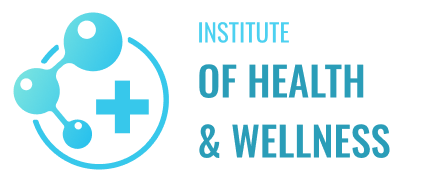Roger Shapiro, professor of immunology and infectious diseases at the Harvard T.H. Chan School of Public Health.
Niles Singer/Harvard Staff Photographer
Health
Beginning of end of HIV epidemic?
Scientists cautiously optimistic about trial results of new preventative treatment, prospects for new phase in battle with deadly virus
Researchers may have found a powerful new preventative against the AIDS virus, which has killed more than 40 million people since the epidemic began in 1981.
In late June, a trial of lenacapavir, an existing anti-HIV drug used to reduce infection, produced an astonishing result: None of the more than 2,100 young female participants in the test contracted the deadly virus. The results beat those of drugs currently being used for this purpose: Truvada, on which 16 of more than 1,000 women became infected, and Descovy, on which 39 of 2,100 plus contracted HIV, between 1 and 2 percent of those treated.
Lenacapavir, produced by drugmaker Gilead Sciences, works by preventing the virus from reproducing. Researchers wanted to know whether giving it to sexually active individuals who have not been infected — a strategy known as PrEP, or pre-exposure prophylaxis — might create a hostile environment in the body and prevent the virus from taking hold.
630,000
People died of AIDS-related causes in 2022
AIDS deaths peaked in 2004, but the condition still killed 630,000 in 2022, when there were 1.3 million new infections. In 2016, the United Nation’s member states committed to ending AIDS as a public health threat by 2030. Researchers have been unsuccessful so far in developing a vaccine.
The Gazette spoke with Roger Shapiro, professor of immunology and infectious diseases at the Harvard T.H. Chan School of Public Health, who has worked to fight AIDS in Botswana for two decades, including early trials exploring PrEP as a way to prevent mother-to-child transmission during breastfeeding. Shapiro said some caveats remain about lenacapavir, but the results are very promising.
It is clear from reading news coverage of this HIV drug trial that there’s a lot of excitement around these results. What do you think of them?
I think the excitement is warranted. We have never had a large HIV prevention trial with zero transmissions before, which is such a convincing result. The other exciting aspect of this trial is the convenience and simplicity of dosing the product just twice per year. I think that will be really attractive to people who may have been on the fence about using PrEP before.
Are these drugs different from vaccines, which also prevent infection?
Drugs are different than vaccines, although when used for PrEP they serve the same preventive purpose. Vaccines train our own immune systems to recognize and attack an infection, whereas drugs work to stop HIV from reproducing at the cellular level and need to be re-dosed to maintain activity.
With a drug such as lenacapavir that can stay effective for six months, the patient experience does start to become more similar to a vaccine, with the important difference that it always needs to be re-dosed.
“Vaccines train our own immune systems to recognize and attack an infection, whereas drugs work to stop HIV from reproducing at the cellular level and need to be re-dosed to maintain activity.”
Is there something that you thought most important about this trial that should be highlighted?
The point to highlight is that zero transmission is a novel and important finding — it received a standing ovation at the international HIV conference when it was presented this week. We have known for several years that long-acting PrEP delivered at a clinic setting is very effective, as this was shown in studies using a different HIV drug called cabotegravir.
But this new study, called PURPOSE 1, really extends those earlier findings for injectable PrEP. The study was large and placebo-controlled, and along with the main efficacy findings, had reassuring safety data.
But there are a few caveats: First, PURPOSE 1, only enrolled cisgender women. There is a companion trial, PURPOSE 2, which will include cisgender men who have sex with men, transgender men, transgender women, and gender non-binary individuals.
The results of that trial are expected in late 2024 or early 2025. So we really don’t know yet whether we will see the same impressive level of protection in those other groups. We also know that these impressive findings occurred in a controlled research setting and may differ in the real world.
Is this potentially the beginning of the end of the HIV epidemic? If so, how long might that take and what would it look like?
I think we are entering a new era where we can expect to drive down transmission to lower and lower levels using a combination of approaches. These approaches include better uptake of testing and treatment, which have been shown to reduce HIV incidence at the population level, as well as PrEP strategies that are more and more effective.
But this only works at scale. We have plenty of work ahead of us to make these approaches affordable and implementable in the places where the need is greatest, which is largely in Sub-Saharan Africa.
“There are still over 1.3 million HIV infections per year — but we now have the tools to really make a dent in these numbers.”
What might stand in the way?
The cost of drugs, for starters. I sincerely hope that lenacapavir will be made available at very low cost for resource-poor parts of the world if it is approved for PrEP by the necessary regulators. There are some encouraging efforts to allow generic manufacturing of this drug for low resource parts of the world, and these need to move forward quickly.
We also need to improve access to HIV testing and linkage to care in hard-to-reach populations, to know who needs to be on treatment and who can benefit from PrEP. And we need simple, community-based implementation strategies to expand access to all of it.
Getting back to whether we might see the end of the HIV epidemic, I think it depends on whether you are asking if we will be able to eliminate all HIV or end its epidemic spread. Humans are complicated. There will always be some who are hard to reach and remain outside of care. And we are still a long way from a one-shot vaccine for HIV, which could ultimately break the cycle of HIV transmission for the next generation.
Until that occurs, our best strategy is to use the amazing new drugs that we have to maximum effect for treatment and prevention and drive new infections to very low levels. This will be no small achievement — there are still over 1.3 million HIV infections per year — but we now have the tools to really make a dent in these numbers. When that happens, we can start talking about the end of the epidemic, while still working toward the ultimate goal of complete elimination.
Is the one-injection-every-six-months treatment model important?
I think so. Many patients really like the current PrEP injections that are once every two months. This strategy removes the need to think about taking a pill each day and can reduce stigma as well. Pushing that out to every six months is almost certainly going to be even better.
For decades, HIV has eluded efforts to control it. What makes lenacapavir different?
We still have a few boxes to check before we can call lenacapavir a game-changer in the PrEP space, but right now it looks very promising. With the right public health messaging and delivery strategies, a highly effective twice-per-year injection to prevent HIV might greatly expand the use of PrEP and drive down new HIV infections. But it needs to be affordable globally, and it needs to be deliverable in hard-to-reach places. Any PrEP strategy, including lenacapavir, will need to be low cost in resource-poor parts of the world to make an impact. I can’t stress this enough.





